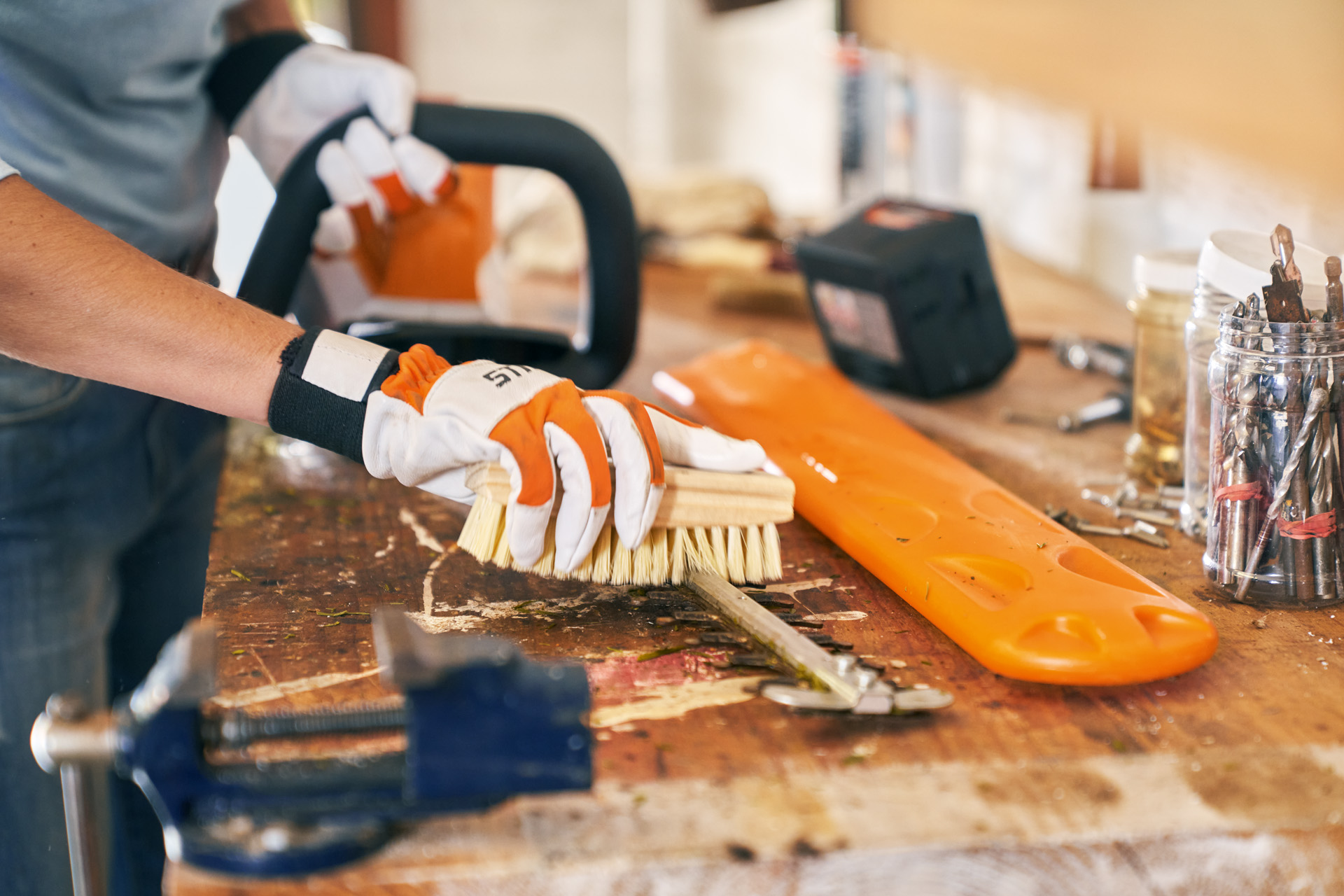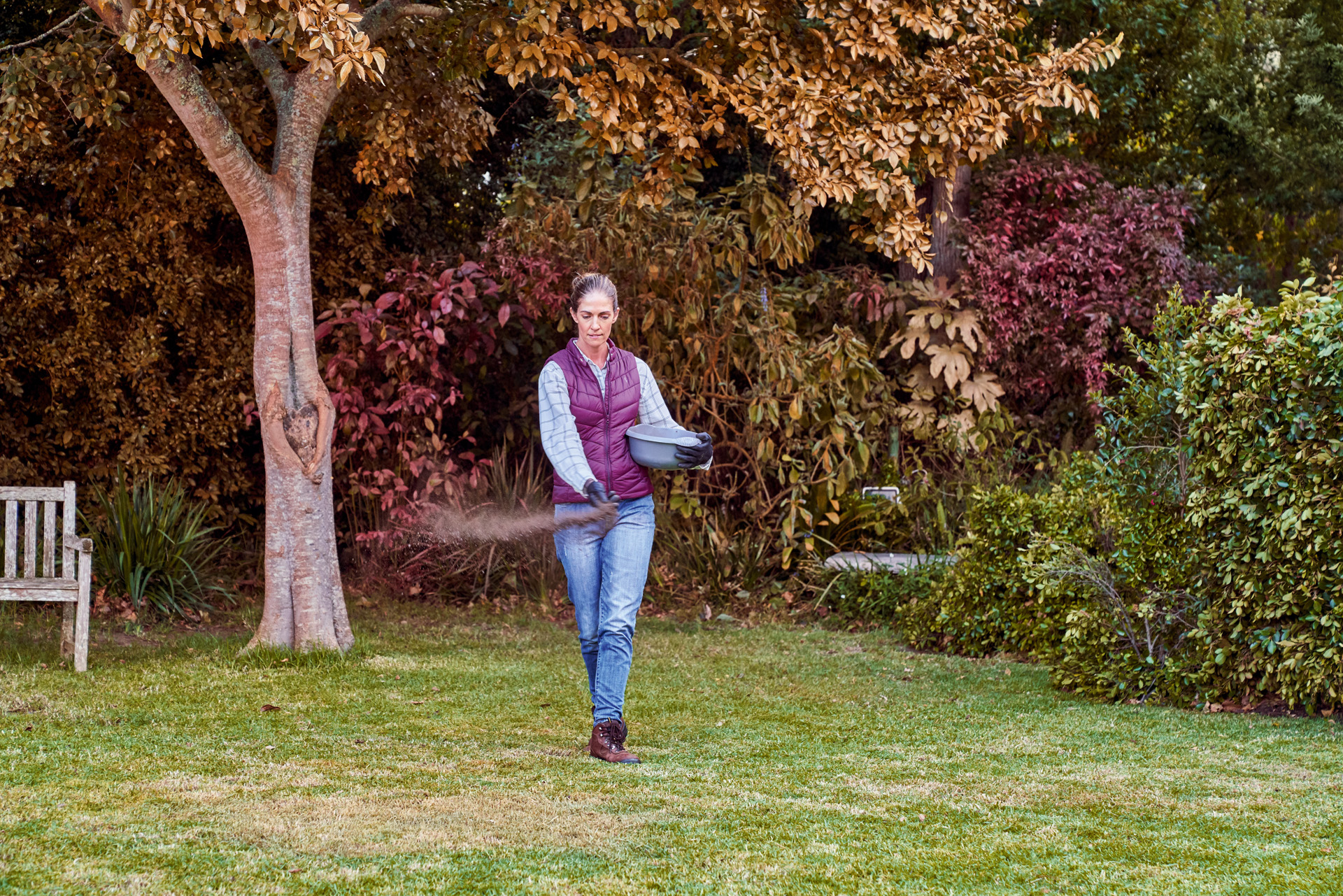All about garden fertilisation and feeding
Garden fertilisation seeks to mimic the natural cycle by nourishing the soil at the right time. Proper feeding is key – find out how to do it.
15.05.2023

Garden fertilisation: informed by nature
Vegetation in the natural world depends on an established biological cycle of growth, death, decay, and decomposition, with every component equally essential. As gardeners creating our own outdoor realms, we need to recreate this cycle for plants to thrive – which requires some extra thought. In untended open space, plant matter dies, falls to the ground, and decays; micro-organisms in the soil break down the remains and release the nutrients contained within, fuelling continued growth. In a human-made garden, though, plants are arranged, pruned, dead-headed and harvested, all of which means fewer nutrients are added to the earth. This is where garden feeding or fertilisation comes in; it is simply the addition of vital nutrients that plants need to thrive.
One way to imitate nature in the garden is by adding compost, as this is created by the same process of decay that occurs naturally in undisturbed vegetation. Compost is a valuable addition, but for your garden to really thrive, you need to supplement it with other fertilisers, adding the specific nutrients that your plants need to grow successfully.

There is a huge range of fertilisers available, and it is easy to become lost among the many products. When should garden fertilising be done? Do you need a special type of fertiliser? What is the difference between mineral and organic fertilisers? We explain everything you need to know below.
Garden fertilisation: choosing the right feed
Fertilisation needs to match plants’ requirements and supply specific nutrients that the soil in your garden or planter lacks. To put it another way, if your soil is already rich in nutrients, fertilisation will do more harm than good – both to your plants and the environment. In particular, over-fertilisation with highly concentrated mineral fertilisers can be detrimental, as excess substances in over-fertilised earth run-off and pollute groundwater. We recommend using organic options for fertilisation, as these add natural matter to the soil, while industrial mineral fertilisers add synthetic nutrients and can harm the environment.
Tip: Soil testing helps you choose the right feed
There are several good reasons to analyse the soil in your garden: it tells you about your soil condition and can guide you towards the right garden fertilisers to use in future. It also helps prevent over-fertilisation of the soil while saving you money and protecting the environment.
Soil analysis sounds advanced but can be done quite simply. Home soil testing kits are available to buy, or you can send a sample off for expert analysis – an online search will bring up providers. These labs will send results back within a few weeks and, depending on the type of test, can give you information on the nutrients or pollutants present in the soil. This helps you choose the right fertiliser for your garden and avoids overloading nutrients.
Garden fertilisation: mineral and organic fertilisers
Mineral fertilisers are artificially manufactured to contain various minerals. They are often sold in liquid form but are also available as industrially produced salts. They have high concentrations of nutrients which are immediately made available to plants. The sandier the soil they are applied to, the more quickly the fertiliser is leached out – mineral fertilisers are a risk to the environment because of this leaching of nutrients.
Organic fertilisers are made of organic material such as bonemeal. As such, they can be considered a natural fertiliser for your garden, adding nitrogen and other nutrients to the soil – though these substances must first be released by micro-organisms underground. Because organic fertilisers are biodegradable and not water-soluble, they have a much slower release rate than mineral fertilisers, but they are also more environmentally friendly, making them the preferred method of fertilisation. There is one caveat to this: mineral fertiliser is fine to use on potted plants as the containers mean no fertiliser will leak into the ground, and potting soil contains no micro-organisms to break down organic fertiliser.
NPK fertilisers can be both mineral and organic. The name refers to the three nutrients these complete feeds contain: Nitrogen, Phosphorus, and K for potassium. It can be difficult to calculate the correct dosage because of the high concentration of active ingredients. The nutrient proportions required vary between different plant groups and are expressed in whole-number ratios on NPK fertilisers; this means that there is a danger of over-supplying a particular nutrient. A soil analysis makes it easier to make an appropriate choice here.
Garden fertilisation: when to do it
Garden fertilisation starts in spring. Do it first in March/April, when plants move into active growth again. Depending on the type you use, fertilisation can remain effective in your garden for six months, after which you may wish to feed the plants again. The important thing to remember is that you should not fertilise your garden just before winter arrives: this is when plants rest and stop growing, so nutrient consumption drops. Find out more about gardening in winter in our guide.

Basic fertilisation in spring
Basic fertilisation should be done in spring. If you are using organic fertiliser, apply it to the soil and rake it in as per instructions. Water the ground well afterwards so that micro-organisms can quickly get to work on the process of biodegrading the substances.
Maintenance fertilisation in summer
Fertiliser can keep feeding your garden for up to six months depending on the soil composition and fertiliser type, but if you need to, you can fertilise again in summer. Many heavy-feeding plants, such as roses, enjoy a second fertilisation in summer and will reward you with stunning blooms. Note: Don’t apply fertiliser to your garden during heatwaves or droughts.
Should I fertilise my garden in autumn?
Plant metabolisms change their behaviour from autumn onwards. Because nature is transitioning from growth to rest, fertilisation in this season is not recommended; it’s best to wait until next year.
STIHL professional tip: Enriching your soil with compost is no replacement for complete garden fertilisation if you are growing perennials and other plants with high nutrition needs – though if you are using compost in your garden, you can reduce the amount of fertiliser applied by around a third. This is a good option, as the effect that compost has on soil is difficult to replicate: it changes the structure and ability to retain water. The long-term aim of using both compost and other substances for garden fertilisation is loose, nutrient-rich soil.

Garden fertilisation: specific needs of various plants
Different garden plants have different fertilisation needs. We have summarised some information about which plants need special fertiliser, what you can use all-purpose products for, and which plants don’t need fertiliser at all.
How vegetable beds are fertilised depends mainly on the crop. In general, though, fruit-bearing plants usually need more potassium than plants such as root vegetables. Tomatoes benefit from feeding with a specialist product.
Using a slow-release fertiliser on your vegetables from the start of the growing season can result in bumper harvests.

Fruit trees don’t need additional fertilisation, as they get most of their nutrients from normal garden soil. However, if growing in sandy soil, there is some value in applying compost and bonemeal up to 1 metre around the trunk. Any more questions on orchard maintenance? Then take a look at our guide to pruning fruit trees.
The right way to fertilise your hedges depends on the type. Flowering hedges prefer a simple all-purpose fertiliser. Evergreens such as thuja may need a magnesium fertiliser if they show signs of magnesium deficiency. Rhododendrons are acid-loving plants with specific requirements for ericaceous soil and fertilisers. While you’re looking at your hedges, don’t forget their other maintenance needs – take a look at our hedge trimming guide.
Herb types that need more fertilisation include basil, chives and parsley. If planted in sandy soil, in particular, these will benefit from a dose of herb or evergreen plant fertiliser. However, Mediterranean herbs such as oregano or thyme are perfectly happy in poorer soils, though they will appreciate the addition of compost as a soil conditioner.
Heavy-flowering perennials have a big appetite and should be fed with an all-purpose fertiliser. Less showy perennials have modest needs, so basic fertilisation is usually enough– this includes bergenias and the vast majority of part-shade and shade perennials.

Because they are not in the ground, annually planted flowers in planters or pots don’t have enough micro-organisms in their soil to biodegrade organic fertiliser in sufficient quantities and within a reasonably short time. This means that organic fertilisers are of little value to them. However, organic fertilisers can be used in long-term perennial container plants such as oleanders. Proper fertilisation results in magnificent blooms.
Summary: garden fertilisation
- Nature’s nutrient cycle does not apply in human-made gardens, as nutrients are continuously removed through harvesting and pruning.
- Soil analysis provides information on the composition of your soil and is always recommended.
- Organic and mineral fertilisers are available. Mineral fertilisers are industrially manufactured and quick to act, but organic fertilisers are better for the environment and the long-term feeding of your garden.
- Initial basic fertilisation should be done in spring. You may wish to fertilise again in summer but never during a heatwave or drought.
- Over-fertilised plants develop softer tissues, often have dark-green leaves, and are highly susceptible to pests and diseases.
- Stop fertilising the garden from August/September so that plants can prepare for the winter.


